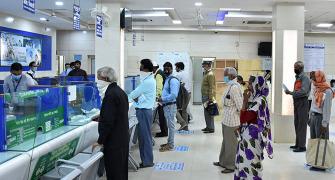This permission was given some time late last month, before the Reserve Bank of India (RBI) on March 31 issued the indicative borrowing calendar for the states for April-June and the one for the Centre for April-September.

In an unprecedented move necessitated by the coronavirus (Covid-19) pandemic, the Centre has allowed states to avail of up to 50 per cent of their 2020-21 (FY21) borrowing requirements in April itself, Business Standard has learnt.
The move became imperative because of the Centre’s resource crunch owing to dwindling revenues and the resultant inability to pay all of the dues of the states under various heads, including devolution, goods and services tax compensation, various grants, and the financial packages which the states have been demanding.
“States have been given permission to borrow up to 50 per cent of their FY21 borrowing ceiling in April. If they want to borrow 50 per cent of their limits upfront, and completely frontload their borrowing, they can do so,” said a top government official.
The official also said if the need arose in the future, the Centre would consider relaxing the overall borrowing limits for the states.
This permission was given some time late last month, before the Reserve Bank of India (RBI) on March 31 issued the indicative borrowing calendar for the states for April-June and the one for the Centre for April-September.
The official said within the bounds of 50 per cent how much the states wanted to borrow was left to them and the RBI.
“Each state will decide, after discussions with the RBI, how much it wants to borrow and the future liability it wants to take in interest payments, what is the appetite in the bond markets for their securities, when is the right time, and related issues,” the official said.
In normal times too, there would be fiscal limits on states, determining their ability to borrow. While those fiscal responsibility and budget management limits are still in place, officials at the Centre and in states acknowledge that these are not normal times.
According to the RBI’s indicative calendar for borrowing by the states in the April-June quarter, they are expected to borrow Rs 1.27 trillion. Of that, around Rs 55,225 crore is expected to happen in April. That amount, and the estimate for the quarter, will certainly be breached.
“As the RBI mentions, it is an indicative calendar. The central bank is usually accommodative of the requests by the states. So they may borrow more,” the official said.
While there are no official estimates of how much states will borrow in FY21, as all the state budgets are not out yet, economists like Soumya Kanti Ghosh of State Bank of India estimate it could be close to Rs 7 trillion.
“Borrowing in 2019-20 was Rs 6.4 trillion. Given the current extraordinary circumstances we are in, this year state borrowing could be higher than this. Under normal circumstances, every year, state gross borrowing goes up by 10 per cent. If we apply that logic, we can get a number close to Rs 7 trillion,” said Ghosh.
Going by Ghosh’s estimate, theoretically if the states do borrow 50 per cent of their year’s requirements in April itself, that could go above Rs 3 trillion. Given that the Centre plans to borrow Rs 79,000 crore in April, there could be a scenario of government debt paper worth Rs 3.8 trillion or more being issued in April itself, something that will put massive upward pressure on yields.
On Thursday, Prime Minister Narendra Modi held a videoconference meeting with chief ministers of various states on the handling of the Covid-19 pandemic. A day later, the finance ministry released Rs 17,287.08 crore to states in revenue-deficit grants and state disaster response mitigation funds for FY21.
The amount released by the finance ministry is just a fraction of what states have been demanding, in financial support as well as clearing pending dues.
Central government officials say there is understandably a resource crunch, but more will be given to states.
Maharashtra had sought a special package worth Rs 25,000 crore from the central government and asked it to release pending dues worth Rs 16,654 crore under various heads by March 31, to fight the economic crisis stemming from the new Covid-19 outbreak.
Tamil Nadu has sought a special assistance of Rs 4,000 crore and a slew of other forms of financial support.
West Bengal has also asked for a package of Rs 25,000 crore and clearance of dues worth Rs 36,000 crore. Additionally, all states have sought relaxation of their borrowing limits.
“There is no need for the states to panic. We are in touch with them. We understand the difficulties they are going through. We also understand they have greater difficulties than we have. The states will be supported throughout the year. We will do whatever is necessary to make sure that they survive through this crisis,” the official quoted above said.
The central bank has also decided to increase the ways and means advances (WMA) limit for state governments and Union territories by 30 per cent till September 30.
WMA is a temporary liquidity arrangement with the central bank, enabling the Centre and the states to borrow money up to 90 days from the RBI to tide over their liquidity mismatch.
The increase in the WMA limits will help the states to rely less on the bond markets, experts say.










